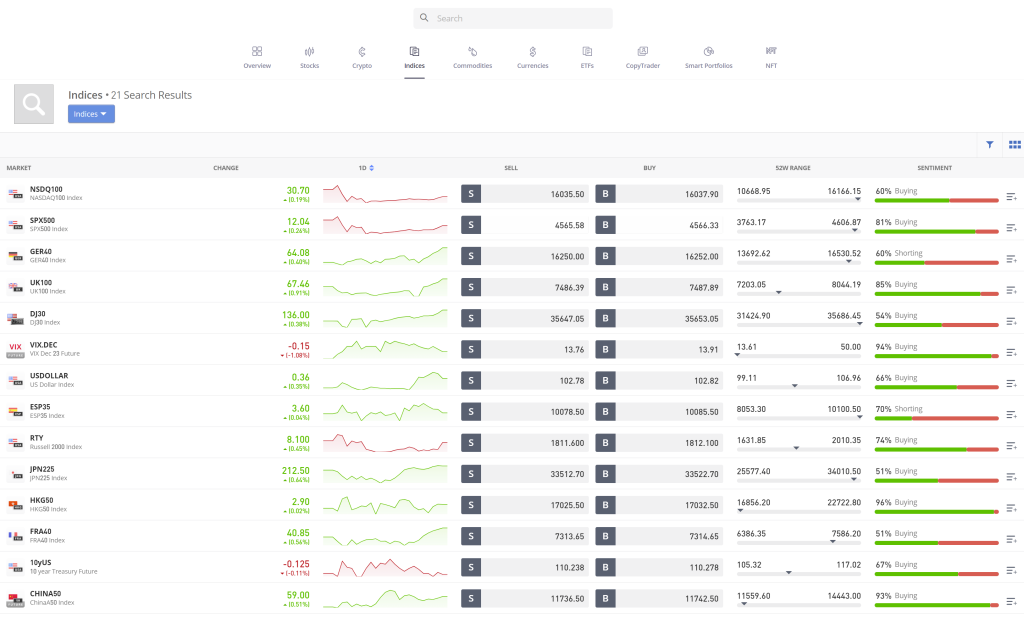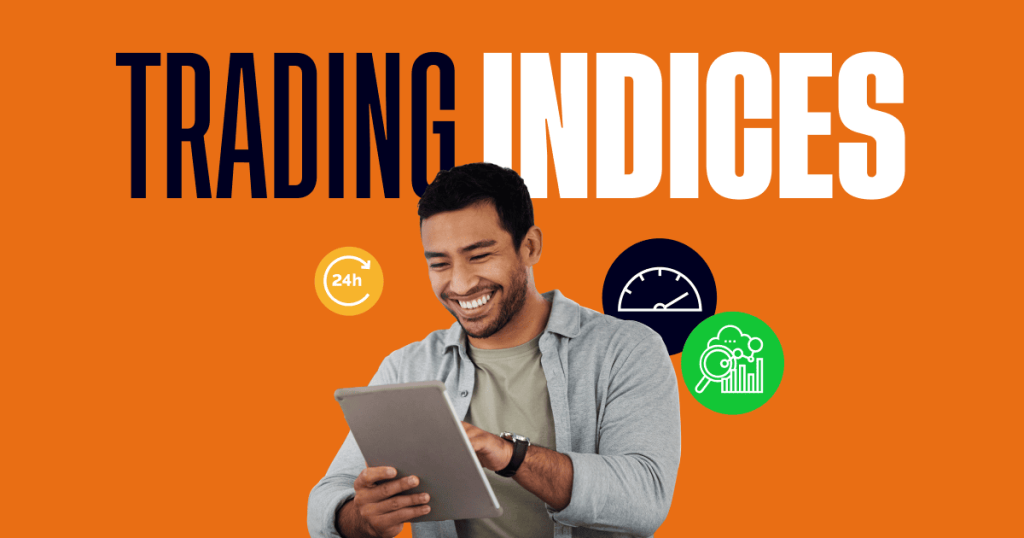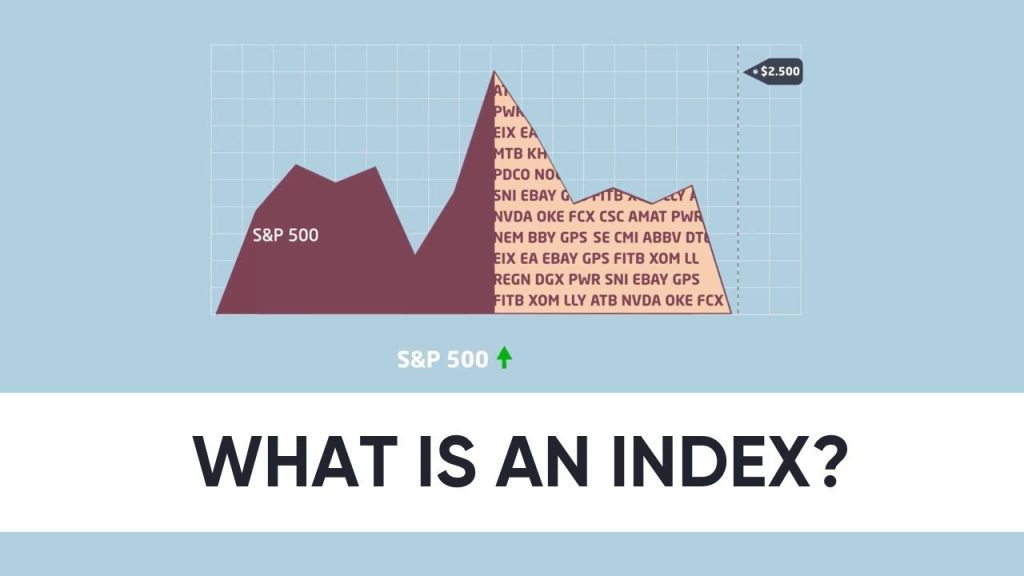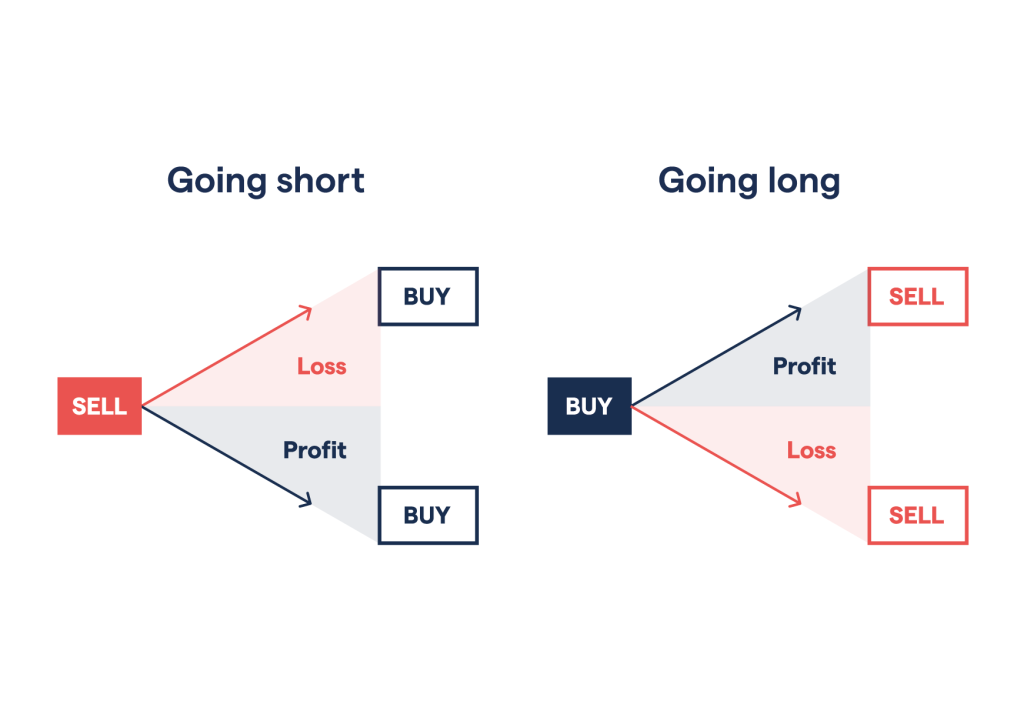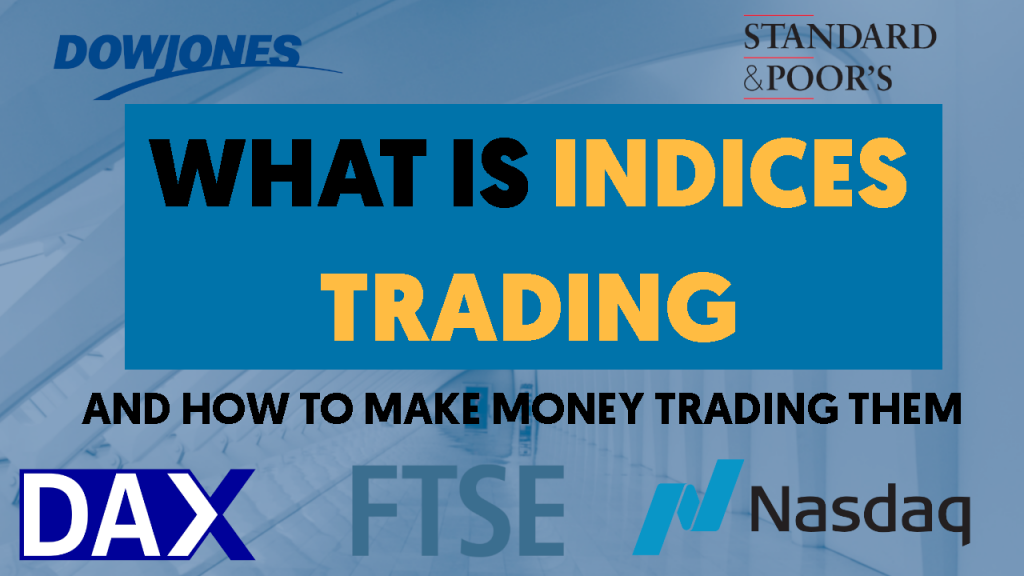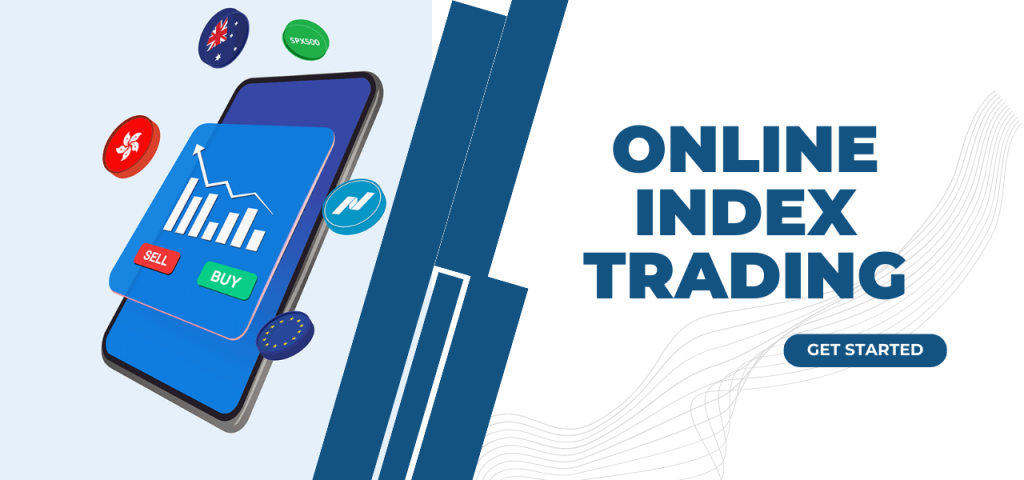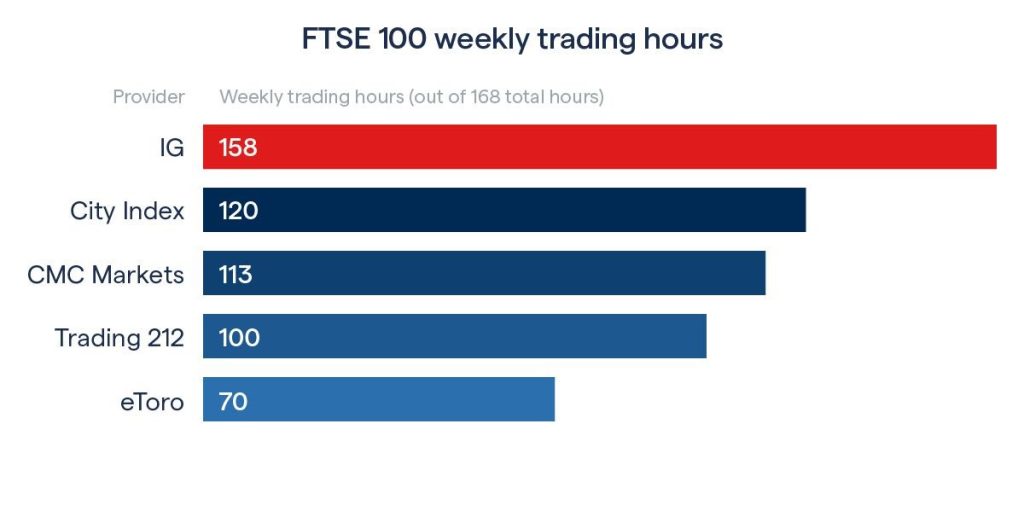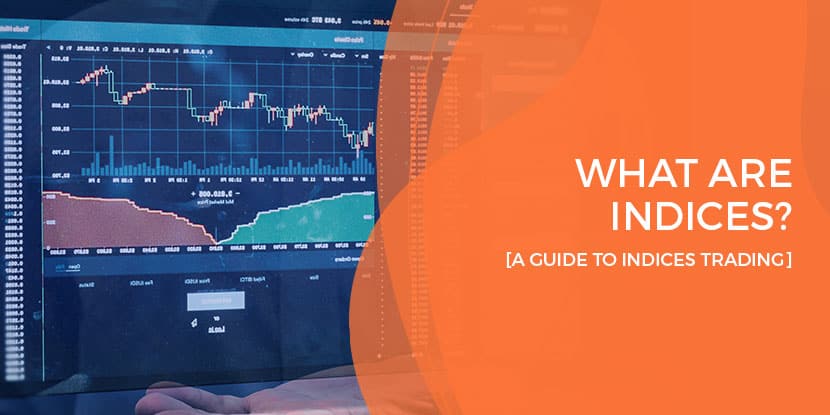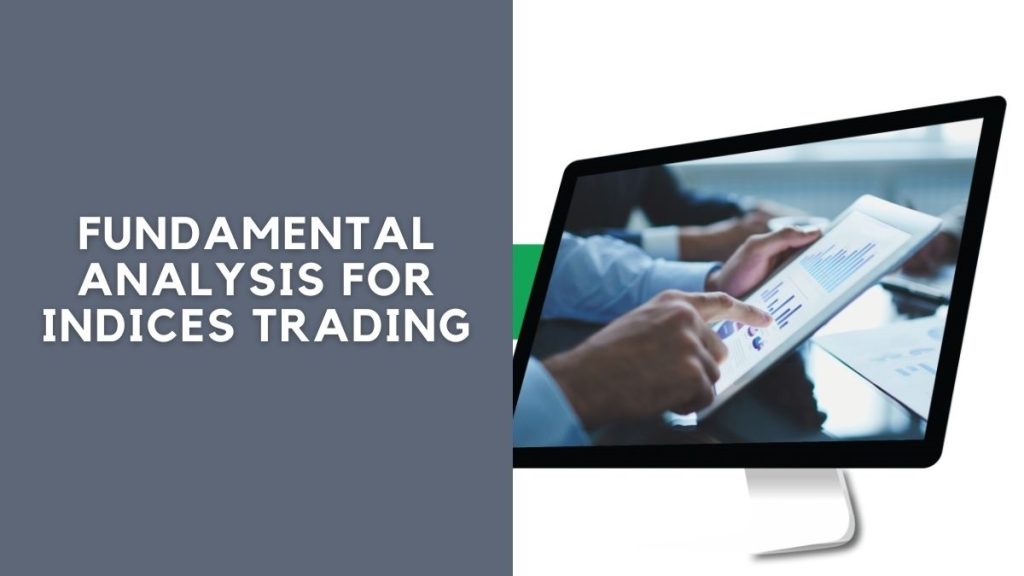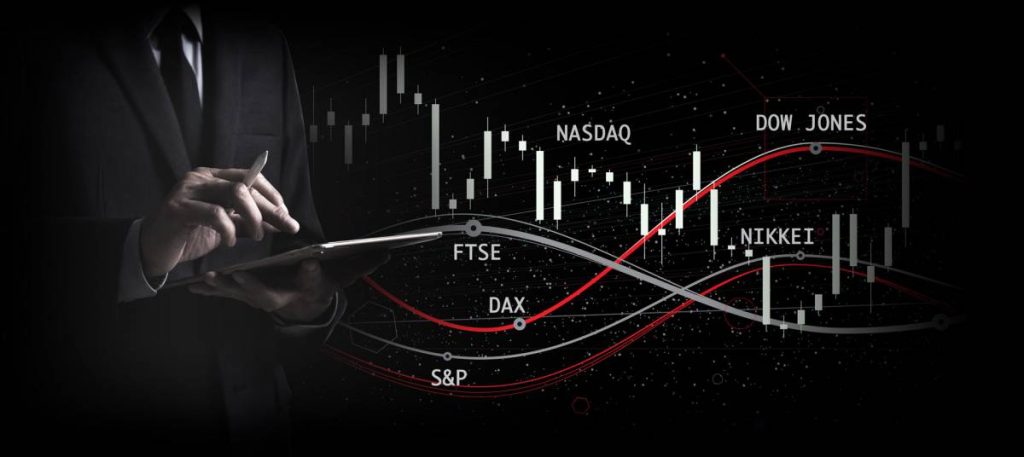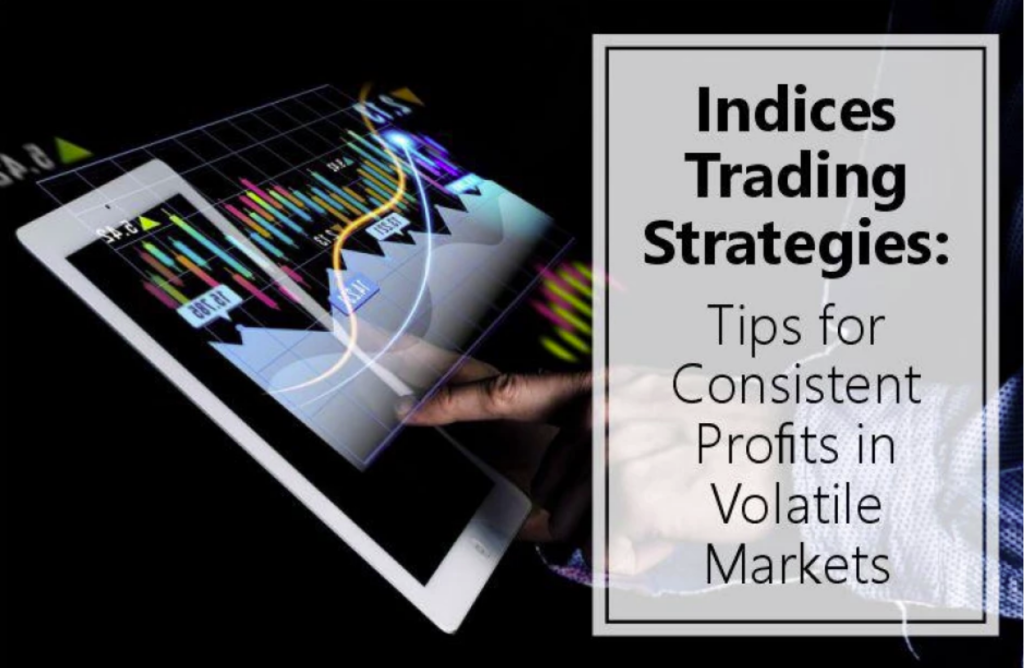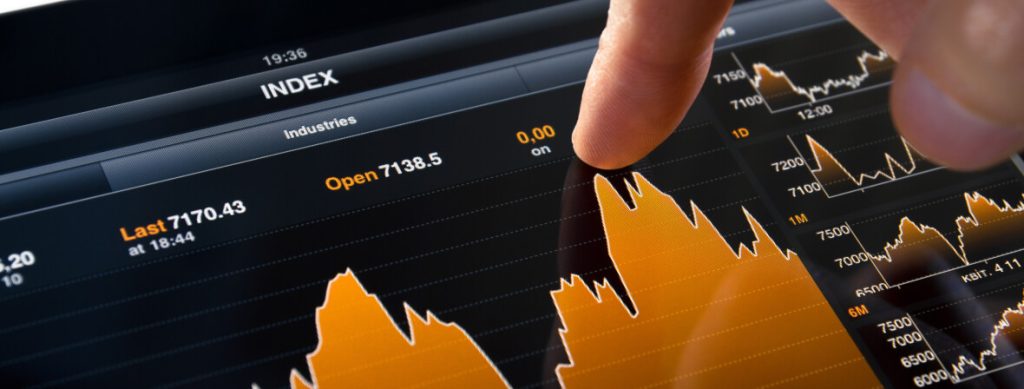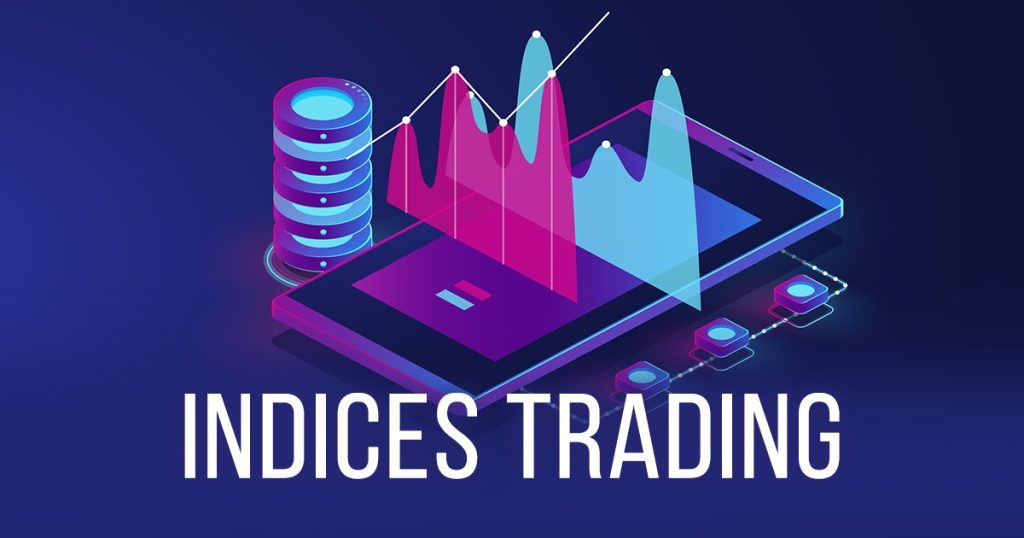Πώς να κάνετε συναλλαγές Δεικτών στην Ελλάδα το 2025
Index Trading is primarily used to highlight the viability of specific geographic areas or market segments. This is why it has been used since 1896. In addition to analysts, bankers, and economists who use Index Trading for this purpose, there are others who can earn a respectable income by making predictions about how their price will move.
Indices Trading or stock indices are one of the most popular asset classes to trade in the markets. Other asset classes include Forex, Commodities and Cryptocurrencies, as we have already learned from our previous articles.
Stock market indices such as Nasdaq, SPX500 or AUS200 and others that we will discuss in more detail below can be traded using a leveraged CFD trading account through a broker such as eToro.
You will learn about the exciting world of Index Trading and how to trade stock indices like a pro from this article.
A basic pillar for starting to trade indices is to have an account with a Broker. Below, you can find simple steps to become the owner of such an account.
Το 51% των λογαριασμών ιδιωτών επενδυτών χάνουν χρήματα όταν διαπραγματεύονται CFD με αυτόν τον πάροχο. Θα πρέπει να σκεφτείτε εάν έχετε την οικονομική δυνατότητα να αναλάβετε τον υψηλό κίνδυνο να χάσετε τα χρήματά σας. Furthermore, in your preparation to start trading indices, you should be secured by a brokerage account that can offer you flexibility during your trading. That said, your broker should be a leader in Index Trading, offering you all the tools to trade. One such Broker for Index Trading is eToro , which we analyze further below. [stocks_table id=”17″] In the field of online trading, eToro is revolutionary because it offers investors a platform to watch, trade, and even imitate the moves of the richest traders in real time. However, the platform promotes communication and strategy discussions between its users. So it’s not just numbers. This makes it an ideal starting point for people who are new to trading. First and foremost, eToro is an international forex broker that replicates the trades of profitable traders using cutting-edge technology. Ideal conditions for social trading of indices, foreign currencies, stocks of well-known companies and commodities are offered on this exclusive platform. When choosing a broker with enough experience in index trading, you should consider eToro. The company’s CEO claims that their goal was to make transactions simple and available to everyone. With over 3,000 tradable assets, including CFD and Forex index trading, eToro is by far the largest and most diverse online broker. eToro’s client base is spread across more than 140 nations worldwide. eToro is primarily a multi-asset trading platform for beginners, intermediate and advanced traders. Both beginners and experienced traders who want to boost their profits or diversify their holdings in index trading can benefit from it. eToro provides an asset index. A detailed list of assets, including stocks, options, currencies and cryptocurrencies (CFDs), is also available for trading on the platform. The list is updated frequently to ensure that it accurately represents the market situation and changes in line with changes in the industry. Only a minimum amount of $50.00 for Greek traders is enough to get started with index trading. Various payment options are available on eToro. These include bank transfers, debit/credit cards, and payments via e-wallets. An exceptional Day 3 at Abu Dhabi Finance Week! 🌟 Grateful for the wealth of knowledge shared and the wonderful connections made. It was such a pleasure to have so many of our eToro Popular Investors and clients with us in this beautiful city. #ADFW #ADGM #FinTech #AbuDhabi pic.twitter.com/UcE9fka987 — eToro (@eToro) November 29, 2023 With withdrawals, the process is simple. All you have to do is submit your details in the withdrawal form and wait for the request to be processed. A stock index is a number that represents the performance of a specific segment of the market by calculating a weighted average of the values of a specific set of stocks. For example, this could be a weighted average of the stocks of the top 40 companies listed on the Frankfurt Stock Exchange (DAX40). In addition, the NASDAQ and the top 100 technology companies listed on the US Stock Exchange. With index trading, we can determine the general viability of a market segment based on the resulting number. This can be done both in the present and for the past. This is the primary use of stock market indices for both analysts and economists. On the other hand, some people use stock indices and index trading to pursue their own financial goals. It is also possible to speculate on the price development of individual stock indices using investment instruments from the financial derivatives group. And this is precisely why more and more investors are attracted to stock index trading. A variety of assets, including stocks, bonds, currencies, commodities, ETFS, and more, are measured by indices. An investor who trades indices can gain a macro perspective of the entire market. This is because indices reflect the performance of these assets. A trader can also compare the profitability of different assets using indices. The S&P 500, for example, is a stock market index comprised of the 500 largest publicly traded companies in the United States. It includes stocks from eleven different U.S. economic sectors. In other words, a trader who bases his position on the S&P 500 gains visibility into the entire value of the U.S. stock market, give or take 80%. So, it makes sense for traders to actually ask about the performance of the S&P 500 when they ask about day trading market conditions. Since index trading is a passive form of investing, it is a fantastic option for beginners looking to get into trading. It is actually one of the most popular types of passive investing methods. In a sense, it maximizes an investor’s return on investment by reducing the need for the trader to participate in frequent market transactions. Traders who use these strategies typically hold long positions with the goal of earning long-term returns. Let’s look at the steps required so that if you are a beginner, you can learn how to trade indices. Let’s assume that we have an account for index trading with the broker eToro. You do not trade the global index or make direct investments with eToro. Alternatively, you can trade derivative instruments based on the FTSE 100 for example using index spread trading and CFDs. Depending on how the markets are moving, Traders can take a position based on their belief that the value of an instrument will increase or decrease and then make a profit or loss. This is an explanation of how to achieve this: While index trading is available on many global indices, retail traders most often trade the major global indices such as the Nasdaq 100, FTSE 100 SP500 and others. But let’s take a look at the most popular indices to trade globally. The Dow Jones Industrial Average was the first index to be created, having been around since 1896. It remains the most recognizable among the index trades to this day. It only had 12 stocks in the past, and calculating the value of the Dow Jones was easy. The process involved adding up all twelve stock prices and then dividing that total by twelve. This method of calculation may have been adequate in the days before computers, but calculation techniques have advanced significantly in our day, when more factors need to be taken into account. The Dow is still the most well-known index, but it’s not the largest. The S&P 500 deserves that title. It’s a collection of the top 500 U.S. companies ranked by market capitalization. It includes companies like Microsoft, Google, and Facebook. However, their weighting in the index is significantly lower. As a result, the SP500 is now considered a better benchmark for the global and US economy. In the US, two of the most well-known and widely used stock market benchmarks are the Nasdaq 100 index and the SP500 index. The 100 largest non-financial companies listed on the Nasdaq Stock Exchange are represented by the Nasdaq 100 index trades. These companies are global leaders in innovation and technology. The Nasdaq 100 index includes buy-to-let stocks like Apple and Google that are popular with investors. Technology companies make up more than half of the index’s assets. The Nasdaq 100 index has shown excellent performance. It has grown at a compound annual rate of nearly 16% over the past 15 years. However, the Nasdaq 100 index could experience significant ups and downs, as it has in the past, if the technology sector experiences volatility. The Dow Jones Industrial was the first stock market in history, as mentioned earlier. It is still the most well-known index in the world today. The stock market crash of 1929, which ultimately led to the start of the Great Depression, made it famous for all time. Since then, the Dow has recovered, with the index currently above 35,000 points at the time of writing. The companies that make up the Dow, or the original Dow components, are no longer included in the index. General Electric was the latest to be excluded. However, the names that make up its component parts will be recognizable to today’s marketers. Prominent companies such as Alphabet (Google), Amazon and others, carry significant weight. The leading index trading in Australia is the AUS200. It is particularly popular as it sets the standard not only for Australia but for all of Asia. A large number of its components are affected by events in China. China is booming and the AUS200 has a high flight speed. The AUS200 also has a problem if China is experiencing economic turmoil. Mining stocks are heavily weighted in the index. There’s BHP Billiton, the world’s largest miner. Rio Tinto is another huge company, too. That means the index typically outperforms other global markets during a commodities boom. Even so, the index is a good representation of the Australian economy as a whole because it covers a wide range of industries, including technology, consumer goods, real estate and finance. Due to its popularity in index trading and its distinct trend, the DAX30 index is one of the most traded indices worldwide. The 30 most valuable companies on the German stock exchange are included in the DAX30 index, also referred to as the GER30 or DE30. It is home to some of the most important industrial and technology companies in Europe and represents the German economy. Since its inception in 1988, the value of the DAX index has increased by 1,000%, from 1,000 to more than 16,000 at the time of writing. The FTSE100 is the forex index that CFD traders refer to as the UK100. The largest companies in the UK100 are VODAFONE, Royal Dutch Shell, and HSBC. These are the stocks that significantly influence changes in the UK’s flagship index. Notice the abundance of oil companies across this index. Additionally, the UK100 is often considered an oil benchmark, while the AUS200 is primarily a mining benchmark. The United Kingdom is also in a special position. Its geographical location, located between the United States and Asia, presents some excellent trading opportunities for those with time zone management skills in index trading. While there are other methods for calculating stock indices, the following are the main ones: This is how the Dow Jones Industrial Average is determined. The stock prices of an index are added together and then divided by the total number of shares in the index. However, because companies do not issue the same number of shares in an index, this method has been found to be less accurate. In an index, for example, Company A may have many millions of shares, but Company B may have only thousands. The average index for example the S&P 500 is determined using this method. The market capitalization of the companies that make up the S&P 500 is what gives it its value. The market value of a company can be calculated by multiplying its share price by the total number of shares outstanding. In addition, and subsequently, a company’s market capitalization is divided by the total market capitalization of the S&P 500 to determine its weight in the index. Also, a company’s impact on the index increases with its weight. The US Dow Jones Industrial, the US Nasdaq, or on the other hand, the US Standard & Poor’s 500 are the highest rated indices for index trading, regardless of which is the easiest or best index to trade. Large technology companies are known to be included in the portfolios of the US Nasdaq indices (Nasdaq 100 and Nasdaq Composite), the US Dow Jones due to its historical longevity. Furthermore, the S&P 500 due to its diverse asset mix. Index trading, unlike individual stocks, cannot be traded directly. The performance of an index serves only as a standard against which other assets can be traded. For example, the performance of stock indices can be used to trade assets such as futures and options. Investors do not always refer to the S&P 500 index when they state that they are long or short a stock. In a futures or options market, however, they are long or short. The beauty of using index trading as a benchmark is that one can gain a view of most financial markets using just one or two benchmarks. One of the key factors in determining success in index trading and investing in general is the existence of well-established “Bellwethers”. Since price action is the cornerstone of all investment strategies, especially index trading, it is important for investors to understand the variables that affect index prices. These elements are listed below, although they are not exclusive. Regarding the performance of stock market indices, this can be impacted by a number of factors, including earnings reports, central bank announcements and investor sentiment. Any change in the aforementioned factors can have an impact on the underlying volatility. Therefore, cause changes in the price of the index. Supply and demand, as well as stock prices, are affected by a company’s profits and losses. These will lead to changes in the prices of individual index stocks and, ultimately, the price of the indices themselves. This results in affecting profits or losses when you trade indices. There is a good chance that changes in company leadership or future mergers will affect stock prices. The price of an index will be affected either positively or negatively by investor sentiment and other economic news. At the same time, index trading in general is also affected. The prices of weighted indices can fluctuate whenever changes are made to an index portfolio, such as the addition or removal of companies. This fluctuation also occurs as traders adjust their positions to reflect the changed composition. Index prices can also be affected by the commodities market. 15% of the shares listed on the FTSE 100 are commodities stocks. Therefore, changes in index prices are somewhat affected by price movements in the commodities market. The Traders’ Commitments Report, or COT, provides futures traders with a broad overview of the futures market. The weekly report shows the total holdings of participants (index trades) in the futures market on exchanges. For example, every Friday at 3:30 Eastern Time, the Commodity Futures Trading Commission, or CFTC, publishes it. This serves as a useful market signal about what to trade. Futures traders view the COT Report as a critical source for price trends in the futures market, and its use in academic research on price trends only serves to highlight how important it is. A COT report can provide additional insight into the behavior of traders in the futures market beyond observations of stock index performance. Furthermore, because it is published weekly, investors can rely on a consistent weekly outlook for their positions, allowing them to update their speculations on market trends. Although the goal of the COT Report is to maintain market transparency, some observers disagree with its guidelines and accuracy. For example, the report divides traders into two categories. Commercial and non-commercial, which refers to trading all commodities. An oil company would fall into the commercial category if it opened both small positions, such as small hedges, and large positions. Some critics therefore question its accuracy. However, it is a useful addition to tracking stock index trends and index trading in general. In index trading, there are of course strategies that largely determine the success of the transaction. Let’s take a look at some of them. Other assets are affected by stocks and can be affected by index trading. For example, falling stock indices are usually associated with a rising VIX. Falling bond prices indicate lower demand for bond ownership, higher interest rates, and downward pressure on indices, while rising bond prices usually indicate lower interest rates and are positive for index trading. Here, traders look at the “market internals,” or the health of the stocks that make up the underlying index. These include measures of market breadth such as: These indicators either diverge from or support what the indicator is showing. A potential reversal is signaled when the internal direction of the market diverges from the direction of the stock market indicator. The extent to which traders are long or short an index is shown by the index trades in the market. Each asset will have a different edge to the position, but when it occurs, it can herald a price reversal. For example, 99% of the positions are long, indicating that very few people are either short or believe that a lower correction in the market is possible. A price decline can result from such a scenario. Another common asset class for index trading is mutual funds, which are essentially portfolios designed to replicate the performance of a specific index, such as the FTSE 100. The value of the index should increase in line with the prices of the constituent shares if they increase on average, and vice versa. Index prices tend to vary because they are made up of many stocks. Some have volatility that exceeds that of individual stocks. While there are many opportunities for index trading, there is also a potential for increased risk. When trading indices, it is essential to be aware of the factors that affect their prices. The main ones are listed below. Stability and confidence in markets can be caused by politics and geopolitics. Instability and distrust can be caused by them. Confident investors are more likely to buy stocks through index trading, which contributes to the upward movement of indices. Stock prices tend to decline or remain stagnant when investors are anxious or do not believe that a political environment will remain stable. The amount of money in circulation can be managed through monetary policy. More money enters the stock market when central banks expand the amount of money in circulation, which supports rising stock prices. Index trading is affected when central banks reduce the money supply because there are fewer dollars or euros, for example, available for businesses to expand or buy shares. Fiscal policy affects businesses, investors, and consumers. It includes spending cuts and tax reforms. Lower corporate taxes increase a company’s profits. This leads to better profits and usually higher stock prices. The same idea is behind consumer tax cuts, which increase people’s available funds for stock market investments and index trading. Furthermore, tax increases usually have the opposite effect, hurting corporate profits and reducing consumers’ disposable income. Investors can learn about the state of the economy through indices and economic performance. Information on employment and inflation indicate whether it is likely to invest more money in stocks. In general, rising unemployment is bad for stocks and index trading, while a strong labor market is good. Higher inflation tends to hinder an index’s performance, while lower inflation is usually better for stocks. A stock market crash can be caused by financial shocks and unforeseen negative events, also known as “black swan events.” Examples of these events include pandemics or sharp declines in other asset classes that cause concern among investors. It could be a major change in government policy or tax laws, or it could be the collapse of a large bank or company that impacts a large number of people and investors. How investors feel about stocks is known as investor sentiment. Which ones are investors more likely to buy or sell collectively. Prices are driven up and down by this. All the other factors mentioned previously affect sentiment. An extremely high sentiment, or euphoria, may indicate a stock market bubble. Since the performance of the components is what gives stock indices their value, it directly affects how well they perform. It should rise if the vast majority of stocks and indices trading within it rise and fall if they fall. Index trading offers benefits to investors but also carries risks. In this section we will discuss the benefits of index trading, and in the next section we will identify the risks. Stock indices should not exhibit price fluctuations similar to those observed in individual stock prices, because they are weighted averages of a group of several dozen stocks. To put it another way, stock indices with a few notable exceptions, such as the DAX40, are not as volatile as individual stocks. Over time, the majority of stock index prices have a tendency to increase. This is also why large corporations and active fund managers rank index trading among their top investments. You are obviously exposed to more risk when speculating on the price movement of an individual company’s stock than when you choose to speculate on the value of all stocks from a particular industry or region. Index trading is a much more stable trading asset than a company’s stock, which can fluctuate wildly and put you at risk if you don’t anticipate it. Index trading can only be done through financial derivatives, as mentioned earlier. Products such as CFDs, ETFs, OPCEs, futures and others are included in this. The ability to speculate on both rising and falling prices is a feature of products such as CFDs. This offers you the opportunity to profit even in the event of a market decline. With financial derivatives, you can open larger positions in index trading than you can with your own money, using a technique known as financial leverage. For brokers operating in the EU, the maximum financial leverage is 1:30. This means that you can speculate with a maximum of thirty times your initial deposit. This will be in line with potential profits as well as losses. As in any transaction of any asset, there are so-called investment risks and dangers in index transactions. Let’s look at them in more detail. It is recommended that novice traders looking to trade indices explore diversified portfolios. It is also important to note that stock indices are highly leveraged. While this can be beneficial, it is important to start with a strong foundation in risk management techniques, such as stop-loss and take-profit orders, support and resistance levels, and other tools. The benefit of trading indices with small capital and access to a basket of securities can be instructive for portfolio diversification. One way to start a trading career is through index trading, as this will give beginners ample experience in understanding individual assets from various financial markets. Selecting individual stocks can be enjoyable when a trader has a basic understanding, because they typically have higher returns. So, we have analyzed, explained and understood how index trading works. Now let’s look at a detailed guide on how you can get started. On the official eToro Broker website, select “register” and fill out the “form” with your details. In the “account profile” section, upload documents such as passport and proof of address, for the KYC process. Once your account is verified, make a deposit to enable index trading. Use a demo account before moving on to live trading. Search for the index you want to trade. You can do this through the broker’s “search engine”. Once you have identified the index you are interested in, you can open a short or long position depending on where you think the price of the index will move. Don’t forget to take the necessary risk mitigation measures, such as activating a stop loss or take profits order. To learn more about trading indices and stocks through eToro, you can refer to the video below. We believe that the best way for beginners to enter the trading industry is by using indices for trading. Indeed, there are other markets that can be more dynamic, with faster and stronger moves and profits, but they may not always meet the needs of a beginner. It is impossible to overstate the inherent upward bias of the indices. Additionally, individuals who have not quite mastered the psychological aspects of trading can still find early success due to intraday volatility when stock market trading is lower. A demo account is a good place to start if you are willing to learn more about index and stock trading. With €100,000 in virtual money from eToro, you can perfect your trading techniques before getting involved in real index trading. eToro — Best trading platform in Greece
Το 51% των λογαριασμών ιδιωτών επενδυτών χάνουν χρήματα όταν διαπραγματεύονται CFD με αυτόν τον πάροχο. Θα πρέπει να σκεφτείτε εάν έχετε την οικονομική δυνατότητα να αναλάβετε τον υψηλό κίνδυνο να χάσετε τα χρήματά σας. Ο Αντώνης Παπαγεωργίου είναι έμπειρος αναλυτής στον τομέα των επιχειρήσεων, των μετοχών και της αύξησης του πλούτου διαμέσου επενδύσεων. Επιπλέον, για περισσότερα από 13 χρόνια διαπραγματεύεται ενεργά στις χρηματοπιστωτικές αγορές, επενδύοντας μακροπρόθεσμα και μοιράζοντας την εμπειρία του μέσω πολλαπλών διαδικτυακών εκδοτικών οίκων. Αφού ολοκλήρωσε επιτυχώς τις σπουδές του στο Οικονομικό Πανεπιστήμιο Αθηνών, μετά από τις οποίες απέκτησε επίσης και μεταπτυχιακό στη δημοσιογραφία. Ο Αντώνης άρχισε ενεργά να ενδιαφέρεται και να γράφει για θέματα που σχετίζονται με τα οικονομικά, την τεχνολογία και τα κρυπτονομίσματα. Τα άρθρα του Αντώνης έχουν δημοσιευτεί σε μερικές από τις πιο δημοφιλείς εφημερίδες παγκοσμίως, συμπεριλαμβανομένων του Capital, Business Insider και Bloomberg. Ήδη αποδεδειγμένος ειδικός στον τομέα του, εντάχθηκε πολύ γρήγορα στην αυξανόμενη ομάδα δημοσιογράφων και συντακτών του TradingPlatforms.com. Σήμερα ο Αντώνης μοιράζεται με το κοινό του τα μυστικά του εμπορίου και παρέχει πολύτιμες πληροφορίες για το συνεχώς μεταβαλλόμενο οικονομικό και επιχειρηματικό περιβάλλον. Η αποστολή του Αντώνης είναι να διαλύσει τις αμφιβολίες σχετικά με τον οικονομικό κόσμο και να δώσει τη δυνατότητα στον αναγνώστη να λάβει σίγουρες και προσεκτικές οικονομικές αποφάσεις. Η εξαιρετική του ικανότητα να μεταφέρει με σαφήνεια πληροφορίες έχει επανειλημμένα εκτιμηθεί από το κοινό της ιστοσελίδας μας και είναι χρήσιμη τόσο για αρχάριους όσο και για έμπειρους εμπόρους. Εκτός από τις κύριες δραστηριότητες του δημοσιογράφου, του συντάκτη και του ενεργού εμπόρου, η καθημερινότητα του Αντώνης περιλαμβάνει και τη συνεχή προσωπική αυτοβελτίωση. Ο Αντώνης πιστεύει ότι οι επιτυχημένοι άνθρωποι μαθαίνουν και αναπτύσσουν νέες ιδιότητες καθ' όλη την διάρκεια της ζωής τους. ΠΡΟΕΙΔΟΠΟΙΗΣΗ: Το περιεχόμενο αυτού του ιστότοπου δεν πρέπει να θεωρείται επενδυτική συμβουλή και δεν είμαστε εξουσιοδοτημένοι να παρέχουμε επενδυτικές συμβουλές. Τίποτα σε αυτόν τον ιστότοπο δεν αποτελεί έγκριση ή σύσταση μιας συγκεκριμένης εμπορικής στρατηγικής ή επενδυτικής απόφασης. Οι πληροφορίες σε αυτόν τον ιστότοπο είναι γενικής φύσεως, επομένως πρέπει να λάβετε υπόψη τις πληροφορίες υπό το φως των στόχων, της οικονομικής κατάστασης και των αναγκών σας. Οι επενδύσεις πάντα έχουν ορισμένο βαθμό κινδύνου. Όταν επενδύετε το κεφάλαιό σας βρίσκεται σε κίνδυνο. Αυτός ο ιστότοπος δεν προορίζεται για χρήση σε δικαιοδοσίες στις οποίες απαγορεύονται οι συναλλαγές ή οι επενδύσεις που περιγράφονται και θα πρέπει να χρησιμοποιείται μόνο από τέτοια πρόσωπα και με τρόπους που επιτρέπονται νομικά. Η επένδυσή σας ενδέχεται να μην πληροί τις προϋποθέσεις για προστασία επενδυτών στη χώρα ή την πολιτεία διαμονής σας, επομένως, πραγματοποιήστε τη δική σας δέουσα ερευνα ή απευθηνθείτε σε οικονομικό σύμβουλο. Αυτός ο ιστότοπος είναι δωρεάν για εσάς, αλλά ενδέχεται να λάβουμε προμήθεια από τις εταιρείες που παρουσιάζουμε σε αυτόν τον ιστότοπο. Εγγεγραμμένος αριθμός εταιρείας: 103525 © tradeplatforms.com Με επιφύλαξη παντός δικαιώματος 2023
Sign up with a broker for index trading – Simple steps
The best broker for index trading in Greece in 2025
eToro – The best broker for Indices Trading as it offers all the conveniences to start trading
eToro functionality
Advantages
Disadvantages
What is index trading?
How index trading works
Learn how to trade indices
The process for index trading
What are the most popular trading indicators?
The Dow Jones Index – The first index in the history of trading
SPX 500
NASDAQ 100
US30 (Dow Jones Industrial Average)
AUS200
DAX30
UK100
The two most important calculation methods for index trading
Weighted price
Based on market capitalization
Price action in index trading
The most important variables that affect index trading prices
Economic news
Financial results for the company
Business statements of companies
Composition changes to an index
Commodity prices
Market monitoring through trading indicators
Strategies in index trading
Transactions Online relationships
Internal index trading data
Market Placement Negotiation
Mutual fund transactions
Factors affecting trading index prices
Political and Geopolitical Developments
Monetary policy
Corporate fiscal policy
Index transactions indicate the state of inflation
Black Swan Event
Investment sentiment
Component performance
Why should you trade indices?
Relatively stable trading element
Trend for growth
Risk diversification
It is possible to speculate in both directions.
Possibility of using leverage
Risks in index trading
Tips for beginners before trading indices
How to Start Trading Indices – Complete Guide
Step 1 – Open an account with eToro Broker
Step 2 – In the account profile, confirm to the Broker who you are
Step 3 – For index trading you need capital
Step 4 – Search for an indicator
Step 5 – Index Trading
Conclusion
Frequently asked questions about index trading
What are the costs associated with index trading?
What happens when index trading is rebalanced?
How are indices traded in Forex?
How should one best trade indices?
Which indices are the easiest to trade?
Bibliographic resources

Αντώνης Παπαγεωργίου
Αντώνης Παπαγεωργίου
Συνεχίζοντας τη χρήση αυτού του ιστότοπου, συμφωνείτε με τους όρους και τις προϋποθέσεις και την πολιτική απορρήτου μας.
